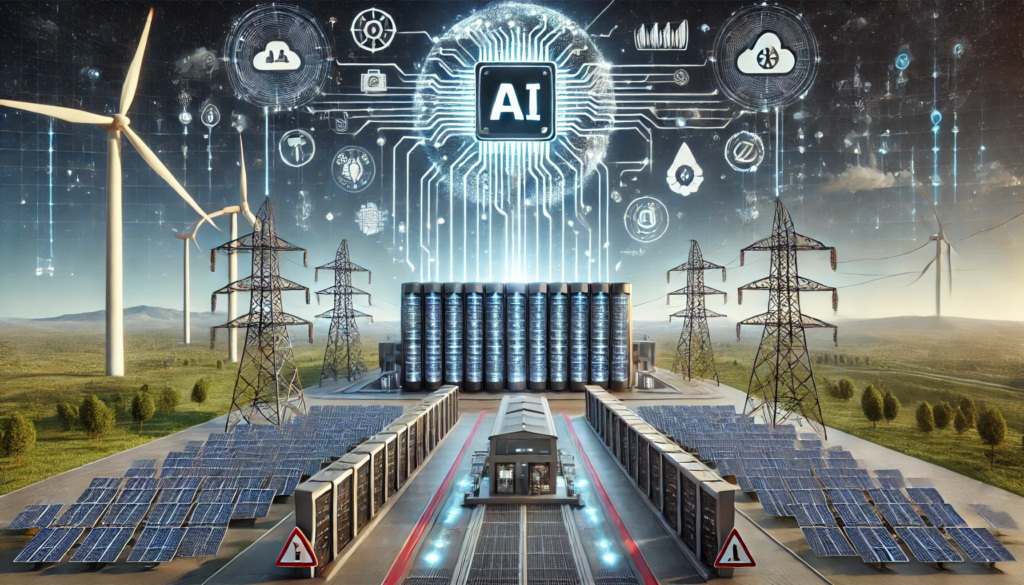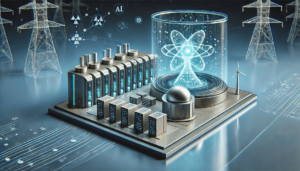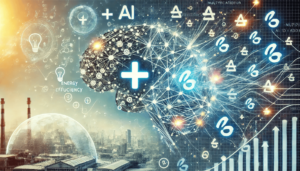The Hidden Cost of AI: The Impact of Data Centers on Global Power Systems

An illustration showing the intricate relationship between AI-driven data centers and global power consumption, highlighting both technological advancements and the resulting energy challenges.
- How are AI-driven data centers impacting global energy consumption and power systems?
- What measures are tech companies taking to manage the increased energy demands of AI technologies?
- What are the potential implications for the future of energy infrastructure and sustainability due to the rise of AI and data centers?
Artificial Intelligence (AI) has undeniably revolutionized various sectors, from healthcare to finance, promising efficiency and unprecedented advancements. However, as the technology propels forward, it brings with it a significant, often overlooked, repercussion: the tremendous energy consumption of data centers. According to a recent Bloomberg article, AI’s power demands are already straining global power systems, raising critical concerns about sustainability and energy management.
The Growing Energy Demand for Data Centers
Data centers are the backbone of AI, housing the vast computational power required to train and operate AI models. These centers consume massive amounts of electricity, and as AI continues to evolve, their energy requirements are skyrocketing. The Bloomberg article notes that data centers currently account for less than 2% of global energy use. However, this figure is projected to rise to 4% by the end of the decade, as reported by Goldman Sachs. This increase is monumental, especially considering that overall electricity demand has remained relatively flat in recent years.
In the United States alone, power demand is expected to grow by 40% over the next two decades, with data centers being the primary driver of this surge. John Ketchum, CEO of NextEra Energy Inc., attributes this spike directly to AI, which he claims requires “10 to 15 times the amount of electricity” compared to previous technologies.
Global Impact and Regional Struggles
The energy consumption of data centers is not just a local issue; it has global ramifications. Data centers now use more electricity than most countries, with only 16 nations, including the US and China, consuming more. This places enormous pressure on the global power grid and complicates efforts to transition to renewable energy sources.
Countries like Ireland are already experiencing the strain. In 2022, Ireland’s data centers consumed energy equivalent to 53% of the country’s renewable energy supply. This figure is projected to rise, potentially exceeding the renewable energy output by 2034. This trend underscores the critical need for balancing data center growth with sustainable energy practices.
The Race for Green Energy
Major tech companies like Amazon, Google, and Microsoft have pledged to power their data centers entirely with green energy within the next decade. However, achieving this goal is fraught with challenges. While these companies are making strides in improving energy efficiency and integrating renewable sources, the sheer scale of their operations necessitates even more substantial energy solutions.
For instance, Google is working on technological methods to use less power and balance demand on the grid more efficiently. This includes optimizing chip and server efficiency, improving data center layouts to reduce cooling needs, and shifting loads to areas where green energy is more abundant. Despite these efforts, Amanda Peterson Corio, Google’s global head of data center energy, emphasizes the need for terawatts more of traditional green energy worldwide to meet the growing demand.
Nuclear energy is being considered as a potential solution. Companies like Microsoft and Amazon are investing in nuclear-powered data centers to bridge the gap. However, the transition to nuclear energy is complex and requires significant infrastructure and regulatory approvals.
The AI Boom and Infrastructure Challenges
The AI boom is driving rapid expansion and innovation in data centers, but it also highlights the limitations of existing power infrastructure. For example, Dominion Energy Inc., servicing Loudoun County (also known as “data center alley”), has connected 94 data centers over the past five years, consuming about four gigawatts of electricity. This demand is expected to continue growing, leading to longer wait times for new data centers to connect to the grid and increasing pressure on existing infrastructure.
Similar challenges are being faced globally. In West London, new data centers must wait until 2030 to connect to the grid due to high demand. In southern Sweden, businesses may face years-long waits to get connected. These delays underscore the need for substantial investments in power generation and transmission infrastructure to keep pace with the burgeoning data center industry.
Economic and Environmental Implications
The rapid growth of data centers and their immense energy consumption have significant economic and environmental implications. The cost of expanding power infrastructure is typically passed on to consumers, leading to higher energy prices. In the US, Goldman Sachs estimates that utility companies will need to invest roughly $50 billion in new power generation capacity to support data centers, potentially raising both wholesale and retail energy rates.
Moreover, the environmental impact of increased energy consumption cannot be ignored. While renewable energy sources are being integrated, the reliance on fossil fuels remains high, particularly in regions where renewable energy is insufficient to meet demand. This not only hampers efforts to reduce carbon emissions but also exacerbates the strain on global power systems.
Balancing Growth and Sustainability
As data centers continue to proliferate, finding a balance between technological growth and sustainability becomes increasingly critical. Tech companies must invest not only in renewable energy but also in innovative solutions to enhance energy efficiency and reduce overall consumption. This includes developing more efficient hardware, optimizing data center operations, and exploring new energy sources like nuclear power.
Policymakers also play a crucial role in this transition. Implementing regulations that promote energy efficiency, incentivize renewable energy adoption, and support infrastructure development is essential to ensure a sustainable future. Additionally, international cooperation is necessary to address the global nature of the energy challenges posed by data centers.
The Future of Data Centers and AI
Looking ahead, the future of data centers and AI will be shaped by the ability to manage and mitigate their energy impact. As AI models become more complex and demand for data processing grows, the pressure on power systems will intensify. However, with concerted efforts from tech companies, governments, and the global community, it is possible to navigate this landscape responsibly.
Investing in research and development of new energy technologies, promoting energy-efficient practices, and fostering a collaborative approach to energy management will be key to ensuring that the benefits of AI are realized without compromising the stability and sustainability of global power systems.
The AI revolution offers immense potential, but it comes with significant responsibilities. By addressing the energy challenges head-on, we can pave the way for a future where technological advancements and environmental stewardship go hand in hand.
For a deeper understanding of the complexities surrounding AI and data centers, you can read the original Bloomberg article.




